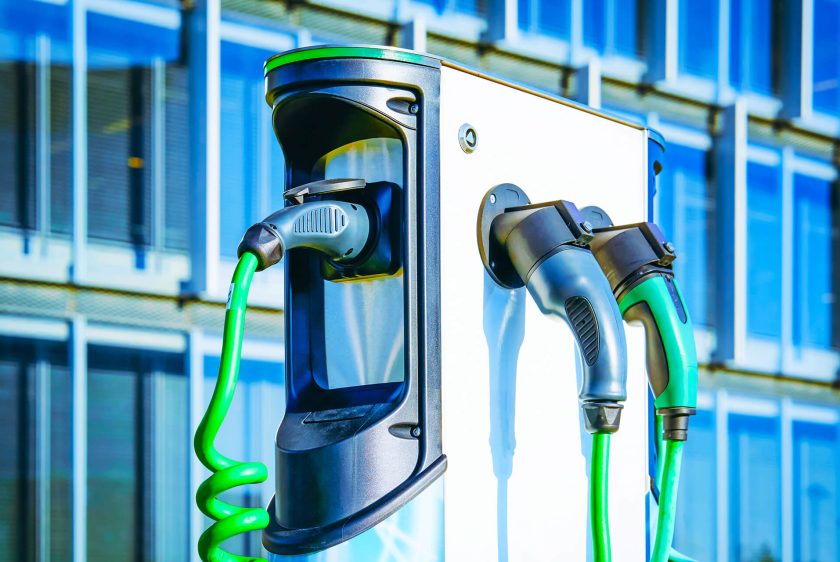How much does it cost to charge your EV at a Charging Station?
The potential to save on fueling costs makes EVs attractive to car buyers, but what does it actually cost to charge one?
With instability of gas prices, EVs have the potential to stabilize and reduce the total cost of ownership. EV’s are also available for any budget or lifestyle. Though the cost to charge a vehicle varies based on the model, your driving habits and where you charge your vehicle, most EV drivers save more than 50% on charging their vehicle when compared to using gasoline.
Where you charge matters because the cost of electricity fluctuates based on the price set at each station and the time of day you charge. Public charging is typically charged by the minute. The type of charger and the number of other people using the charger will impact how quickly the vehicle charges.
In 2017 Forbes Magazine conducted a test of a Tesla Model S and found that a full charge for a range of 259 miles cost $13 at that time in the U.S., which averages to 5 cents per mile, while gasoline vehicle drivers paid 15 cents per mile on average, based on $2.96 per gallon.
What are the different types of public chargers?
There are two primary types of public chargers, Level 2, and Level 3. The main differences between these types are the price to purchase the chargers, the level of infrastructure required to support the chargers, and the time it takes to charge a vehicle.
Level 2 chargers are often found at workplaces, hotels, destinations and other places where the vehicle will be parked for four hours or more, because they charge vehicles 18-28 miles of range per hour, which equates to a full charge in eight hours or less. Keep in mind that charging equipment is advancing rapidly, and charge times will decline as the technology evolves. The cost of electricity will also fluctuate.
Many sites already have enough surplus power infrastructure to host Level 2 chargers without a major investment in electrical infrastructure. In addition to those savings, Level 2 hardware may cost as little as $1,500 per unit plus install.
The Level 3 category is a catch-all for everything faster than Level 2. They use direct current (DC) which makes them fast, for this reason, Level 3s are known as DCFC (fast chargers). They can fully charge a vehicle with no charge in 30 minutes or less with their output of 350 kW. Level 3 fast chargers are a great option for road warriors and road trippers because they are so much more convenient.
The cost to fill up at a fast charger is higher than a Level 2. According to Investopedia.com, the average cost in the U.S. is $0.35 per kWh or $10.00 to $30.00 for a full charge.
No doubt the higher cost can be attributed to the higher cost of the charger and the significant infrastructure required to deliver this much more convenient fast charge. The owner of the stations sets the price which may vary throughout the day based on the rate the owner is paying for electricity, market demand and competition, fees charged by the owner to use the charger, fees assessed by the charging network platform and time of day.
There is a third type of charger, Level 1. Level 1 chargers will come with your new EV when you purchase it. They have much slower charging speeds and for that reason, are suitable for vehicles with lower battery capacities. Level 1 chargers are most often found in homes because they are affordable for an average person and can be plugged into a regular 120-volt outlet. A Level 1 charger typically produces 5 miles of range per hour. These expenses vary based on the price per kWh charged by the power company. For example, at an average of 13.3 kWh, an overnight charge costs $1.33. At this rate, a full charge can range up to $15, according to Freewire, a leading charger manufacturer.
How can I find an EV charging station to charge at?
There are 53,000 EV stations in the U.S. at the time this was written, with the number expected to increase to 1.2 million public chargers by 2030.
EV drivers report “range anxiety” which is the fear of not having a place to charge. To help combat range anxiety, the U.S. government is enacting a plan to fund the construction of the National EV Infrastructure network (NEVI) which will implement charging stations every 50 miles interstate highways throughout the country. If you would like to evaluate your location to become a NEVI partner please contact us at info@impower-connection.com for information.
There are many ways to locate EV charging stations so you can plan your trips and have peace of mind and enjoy your journey. First, some EVs have a built-in platform that tells you where the nearest charging stations are and navigates you there seamlessly.
There are also apps such as Chargemap, which is kept up to date by companies, users, and nonprofits.
ChargeFinder is another app which is as simple as entering your location to find local charging pinpoints. Each points also specify which company operates the chargers, helping you locate your preference.
PlugShare is one of the most well-known apps used by drivers. This free app is accessible on iOS, Android and the web, helping users find stations, leave reviews, and connect with other EV drivers.
The Alternative Fueling Station Locator is a tool run by the U.S. Department of Energy (DOE). It can be accessed on the Alternative Fuels Data Center website, afdc.energy.gov. It also identifies where drivers can find other alternate fuel types.
ChargeHub is another government-run alternative fueling station locator. It can also found on the Alternative Fuels Data Center website. It includes data on charging stations in the U.S. and Canada. As you zoom in on the map from this site, you can pinpoint chargers that best suit your needs.
These apps and maps are beneficial because these sites do not cater to a particular charging company, which would exclude competitors that may be nearer.
Where is the best place to charge an electric vehicle?
Safety is the highest priority for EV drivers. Aside from price and distance to the charging site from your location, consider the following when choosing a location to charging your EV.
Seek out a well-lit site that is visible to passersby. Easy-to-find charging stations get used more frequently than those that are hidden in the back of buildings. Locations with amenities such as restrooms, or a place to get coffee or a meal are favorites among drivers. If a location is visibly well-maintained, that may be an indicator that it has a higher “up time” rate, meaning that it is fully operational on a more consistent. Charging sites get reviewed, just like businesses do, so check the reviews to get an idea of what you can expect.
For businesses, EV charging stations are an attractive amenity that draw EV drivers to your location. While charging, these drivers typically enter the site host establishment and spend money on food and goods there. Not only does it attract visitors, but these visitors are a captive audience and overall are proven to patronize the business during their 15–30-minute fast charging session.
Businesses that understand this and want to get the most return on their investment in EV charging infrastructure, will make their sites safe, visible, attractive and maintain their chargers to ensure maximum up time and in order to get positive reviews on the locator apps from drivers.







